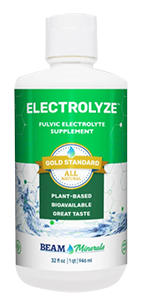If you enjoy the great outdoors, yardwork, gardening, sports but like many of us, have sedentary jobs, you may be labeled a ‘Weekend Warrior’. These folks typically sit in the office all week and then physically exert themselves on weekends to ‘catch up’ on all the activities they love. Unfortunately, this can be a shock to our bodies particularly as we age, and can often result in a whole list of ailments including shin splints, pulled/strained muscles, plantar fasciitis (heal pain), tennis elbow, knee pain, back pain, neck pain, tendonitis, rotator cuff injuries, ankle sprains – and more! Many of us are no longer 20-somethings but continue to dive into activities forgetting how much more pliable, fit and well-trained we were as youngsters. If you are not frequently training to improve your core strength, flexibility and endurance, you are almost certainly putting yourself at risk for Weekend Warrior injuries.
So, in this first blog of a series, I’ll cover tips on how to enjoy your activities without getting hurt.
Gradually increase your activity level and do it often!
- Increase your workouts 10-20% a week to give your body time to build and include enough rest days to ensure adequate repair. The older you are, it’s likely you will need more time to recover so don’t try to keep up with the teenagers but go at your body’s comfortable pace. Keep in mind that even young, competitive athletes train to gradually build strength and endurance over time. When I was in my 20s and 30s, I would push myself to do 5-6 intense workouts a week but was constantly catching a bug/cold. If only I knew then what I know now…
- If you are active most days of the week with exercise and resistance workouts, you are ‘conditioning’ your body for the weekend ahead and preventing injuries. So don’t be a couch potato during the week – aim for at least 20-30 minutes of exercise daily. If weather is not cooperating, you can do resistance training at home or a short Tabata workout (intense 20-40 sec movement with 10-20 sec break) which requires no equipment. Here are several to try:
- 20 minute Tabata workout: https://www.youtube.com/watch?v=D7oV4wXMUws
- 20 minute full body strength workout with no equipment: https://www.youtube.com/watch?v=Q2cMMnUuKYQ
Wear the right gear!
- In addition to safety gear (helmets, knee and elbow pads) and comfortable/supportive clothing, you need proper footwear. If you like to run, buy running shoes that support your shins and feet. You can have the right ones measured for your sport and foot form at stores like Fleet Feet. And make sure you replace the shoes after 350-500 miles. Click to find a Fleet Feet store near you: https://www.fleetfeet.com
- To protect your bones and muscles, you can try compression socks and wraps to help reduce inflammation and swelling. I wear compression socks for long plane rides so my shoes will still fit by the end of the journey! They are widely available in different lengths and styles. This one got high marks but make sure you hand wash them so you can wear them for a long time.
Stretching and posture
- You should incorporate a stretch routine daily even if you are not working out. Stretching can improve flexibility and range of motion while reducing muscle tension. If you’re like me and have little patience for stretching, here’s a 5-minute full body one to try: https://www.youtube.com/watch?v=2L2lnxIcNmo
- Have you heard of the Egoscue technique? It was designed to build proper posture and body alignment to prevent injuries and pain. When you are in alignment, the spine and muscles work in sync with optimal function instead of trying to compensate for each other’s weakness. Try out this 5-minute Egoscue exercise to start your day: https://www.youtube.com/watch?v=FdNS95hpL-o
Keep hydrated!
It’s important to keep yourself hydrated especially during the summer heat to avoid cramps, muscle pains and other injuries. Your body sweats out water, electrolytes and even toxins so you should replenish all of it minus the junk. These are good tablets to have around to add to your water. They taste good and have calcium, potassium, magnesium and sodium:
To take a comprehensive approach to hydration, you should also add the trace minerals that your body needs. Trace minerals are essential but only needed in small amounts. Your body depletes them through activity and sweating so it needs to be replenished in small quantities. I like the fulvic and humic trace minerals because they are plant-based, 100% bioavailable and work in concert to support hydration, optimize nutrient uptake and assist in removing cellular waste. As a fan of fulvic/humic mineral complexes, I take it daily even if I’m not doing any physically exerting activities. There are many on the market but this one is pure, odorless and tasteless so mixes in nicely with whatever drink you are having:


